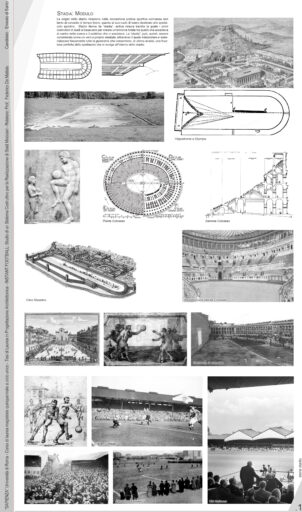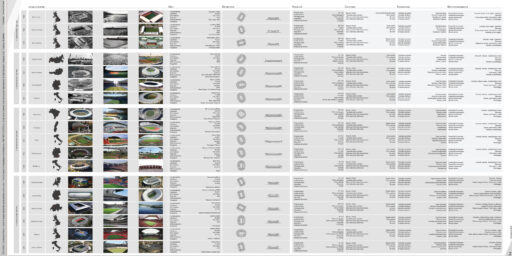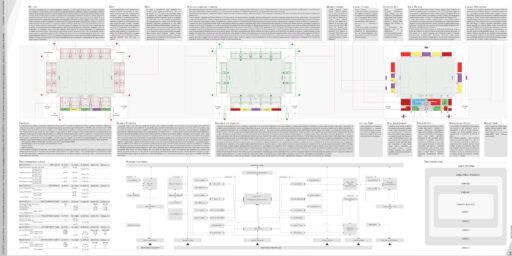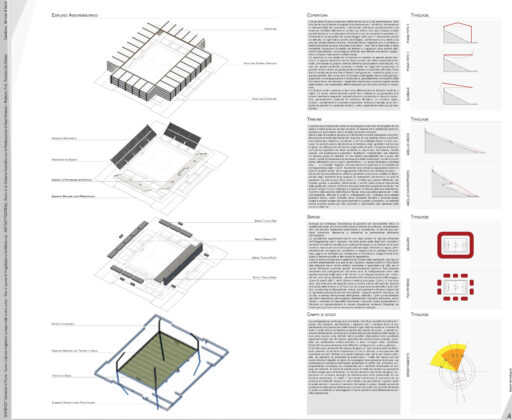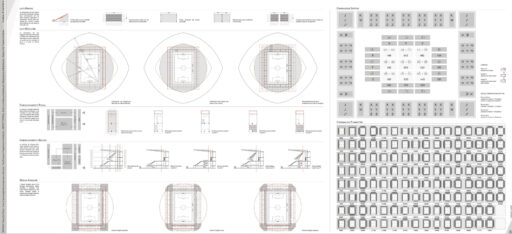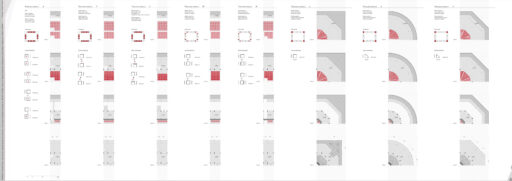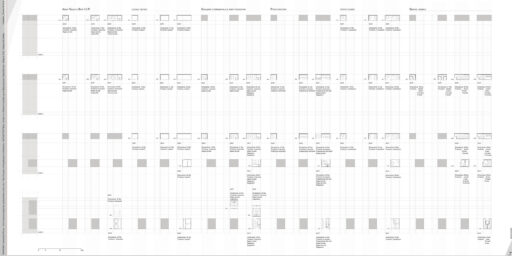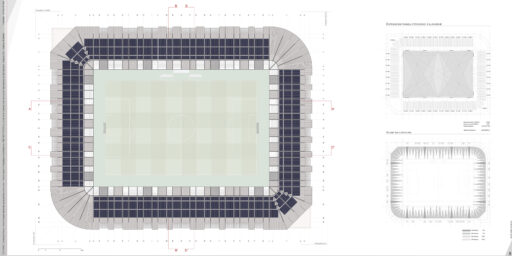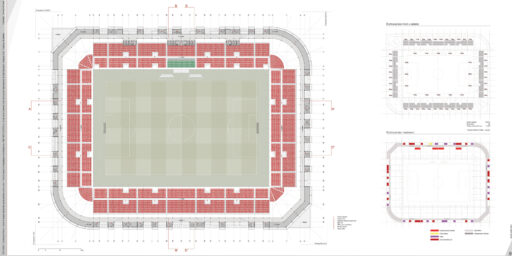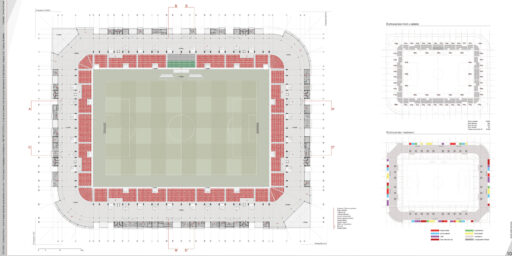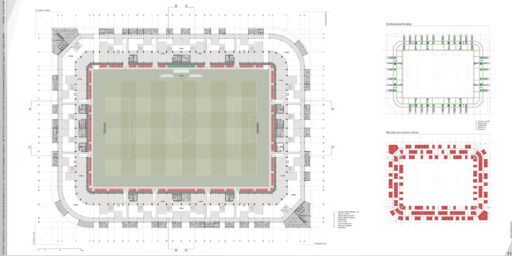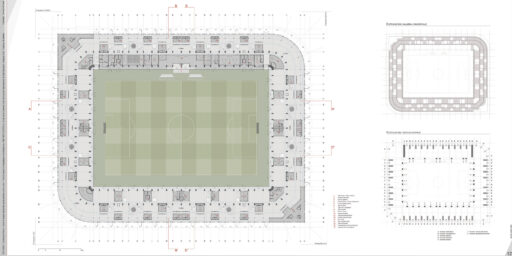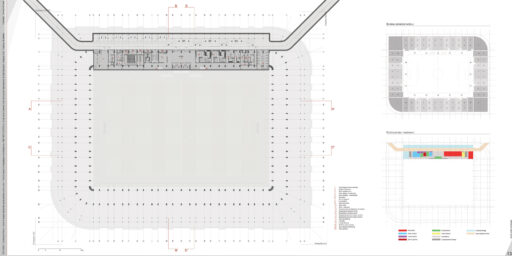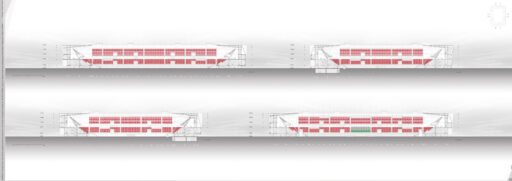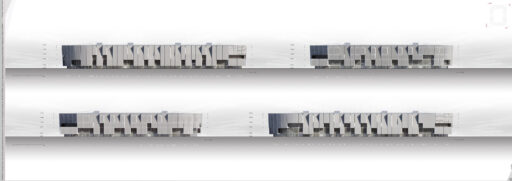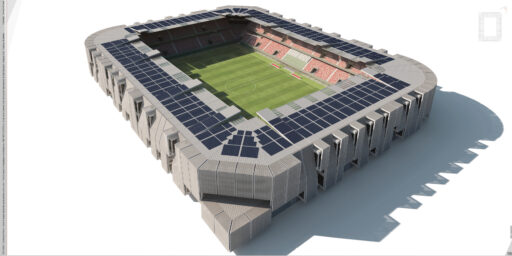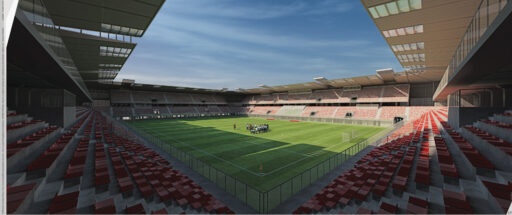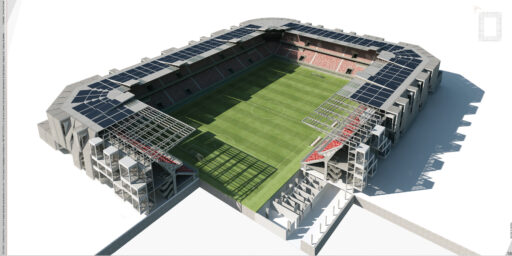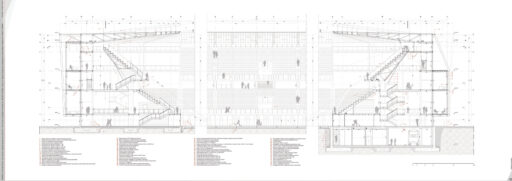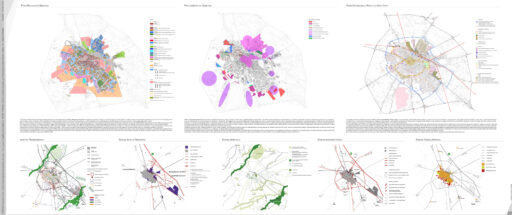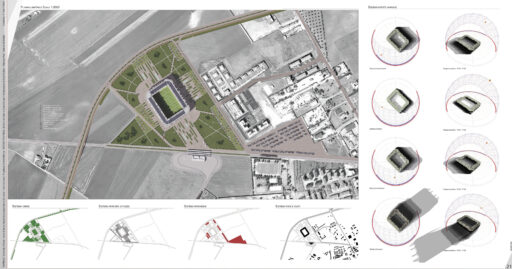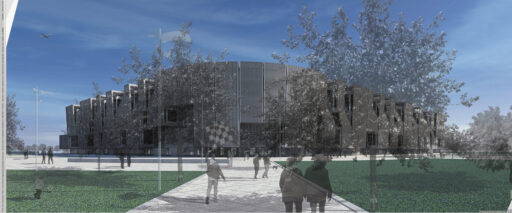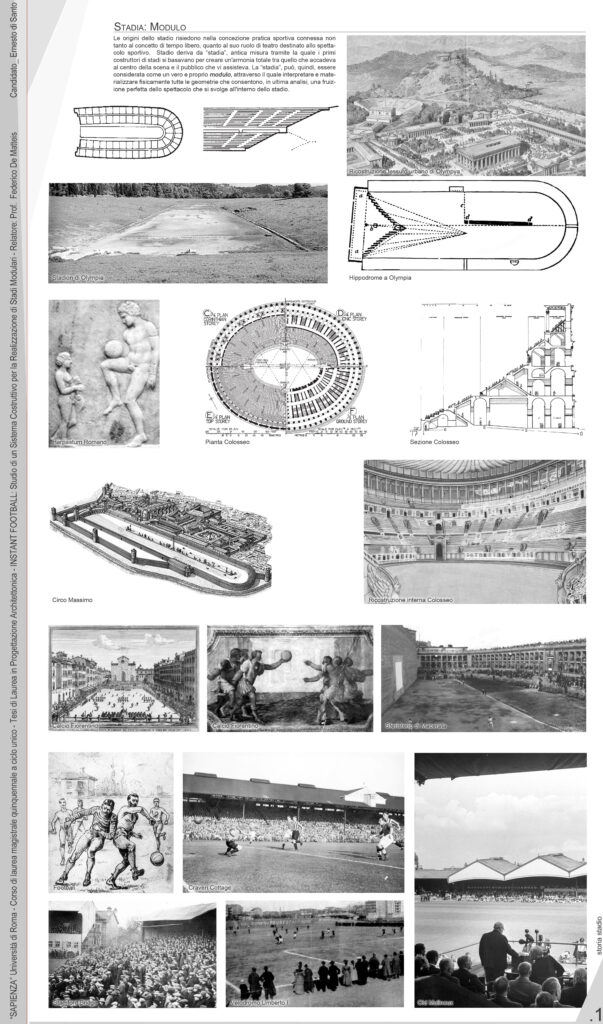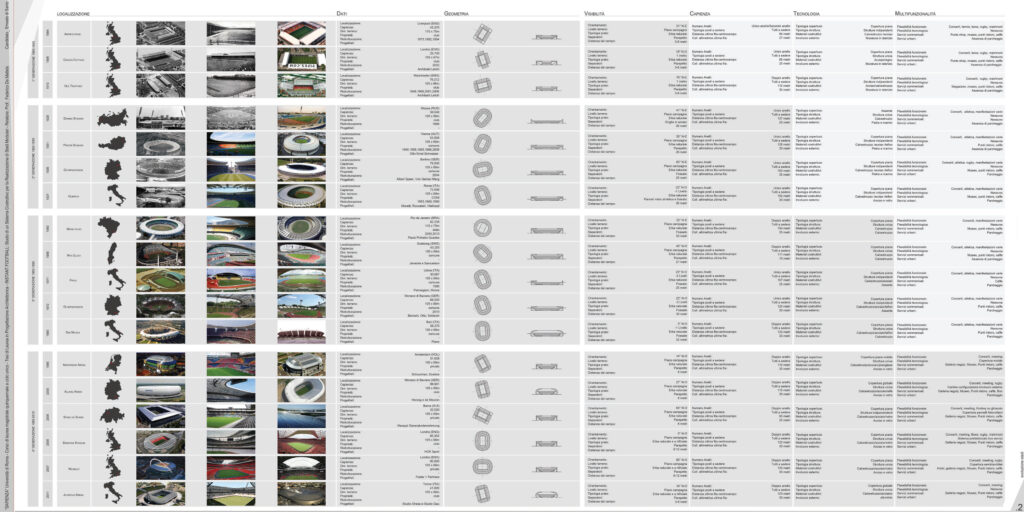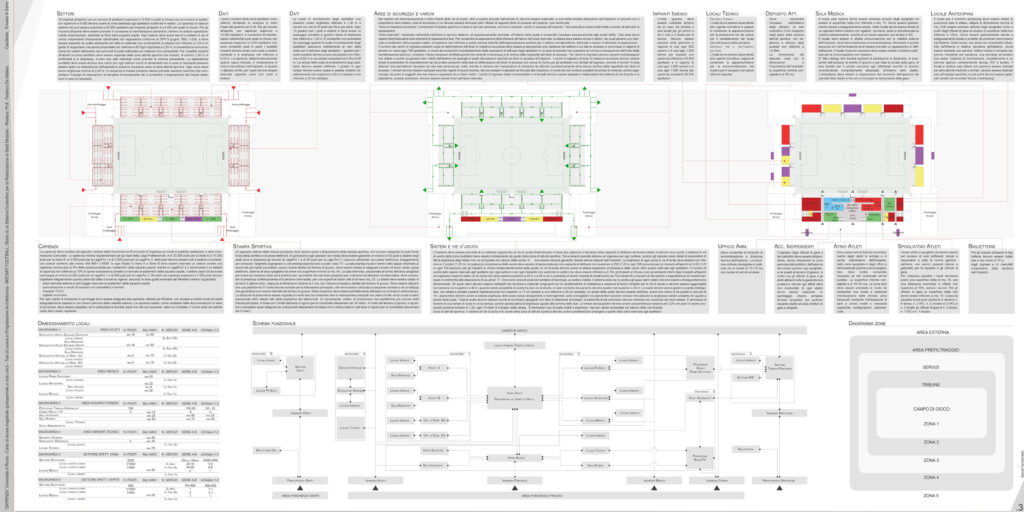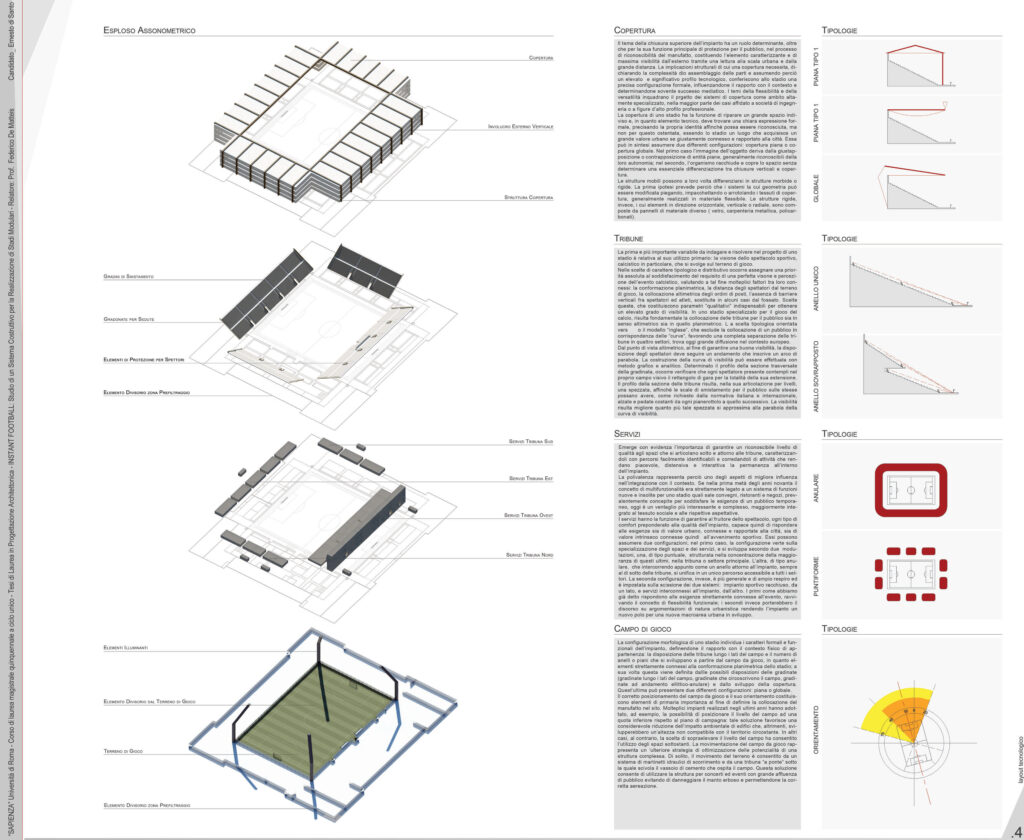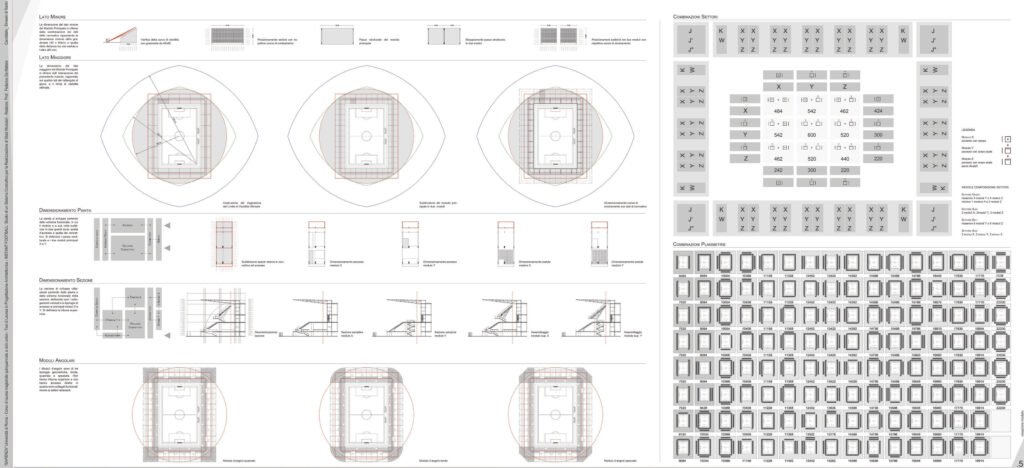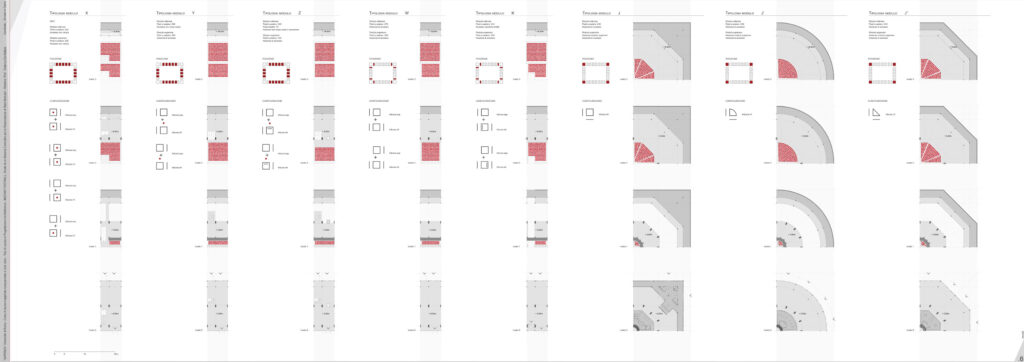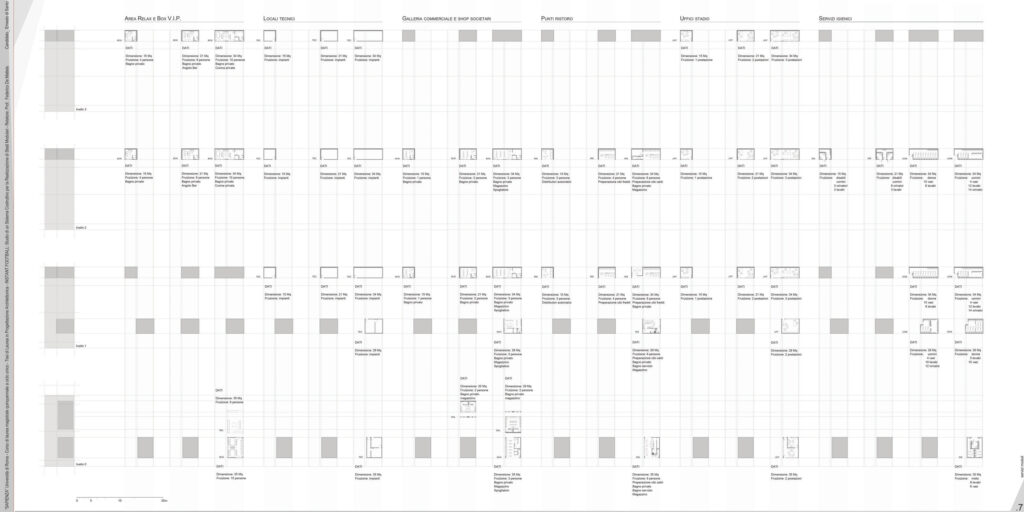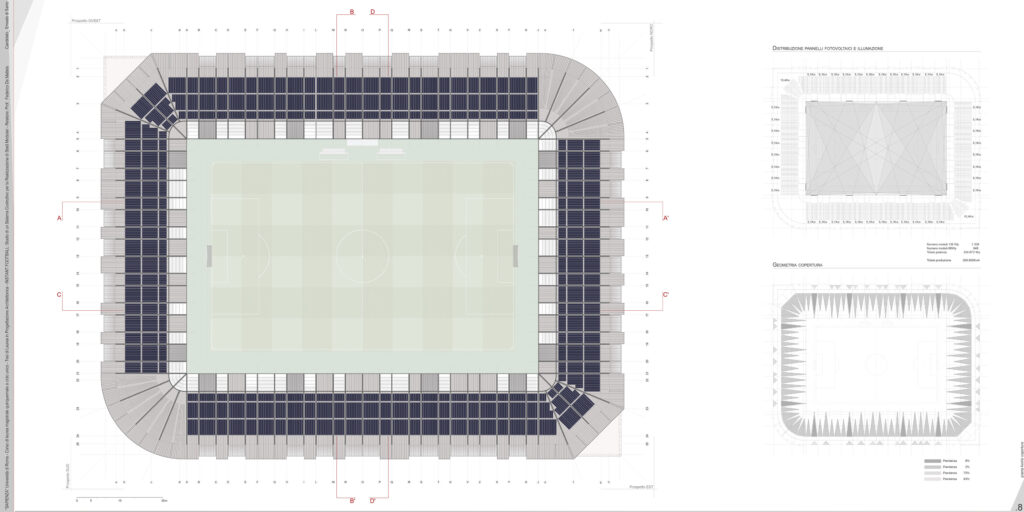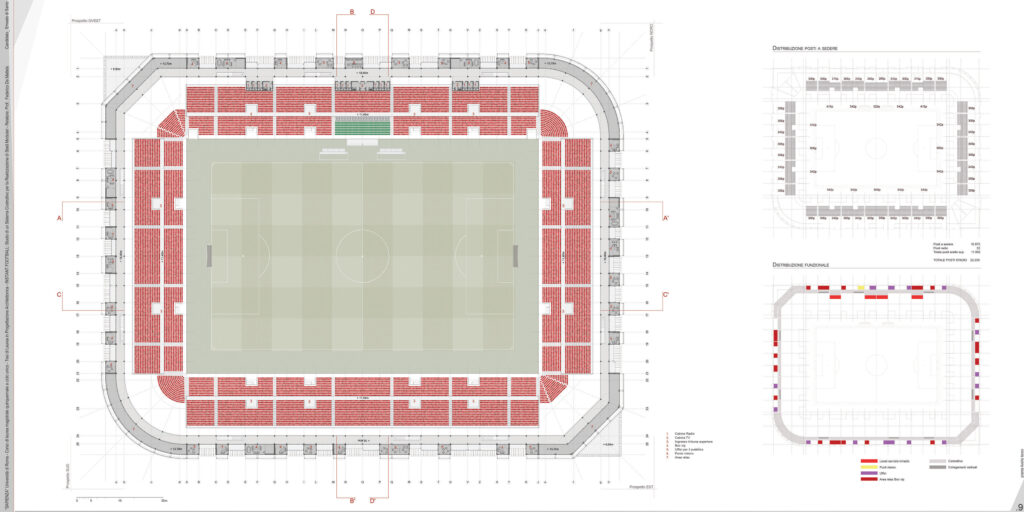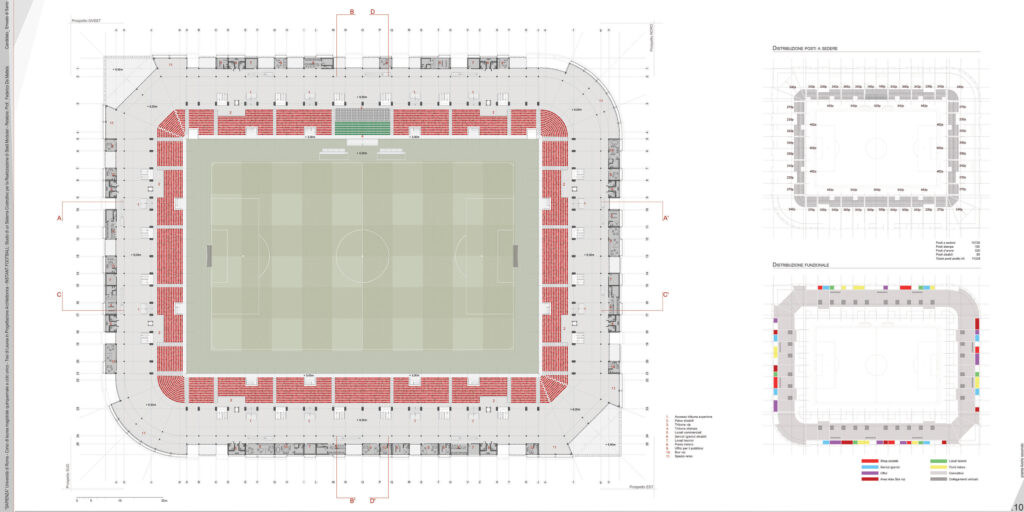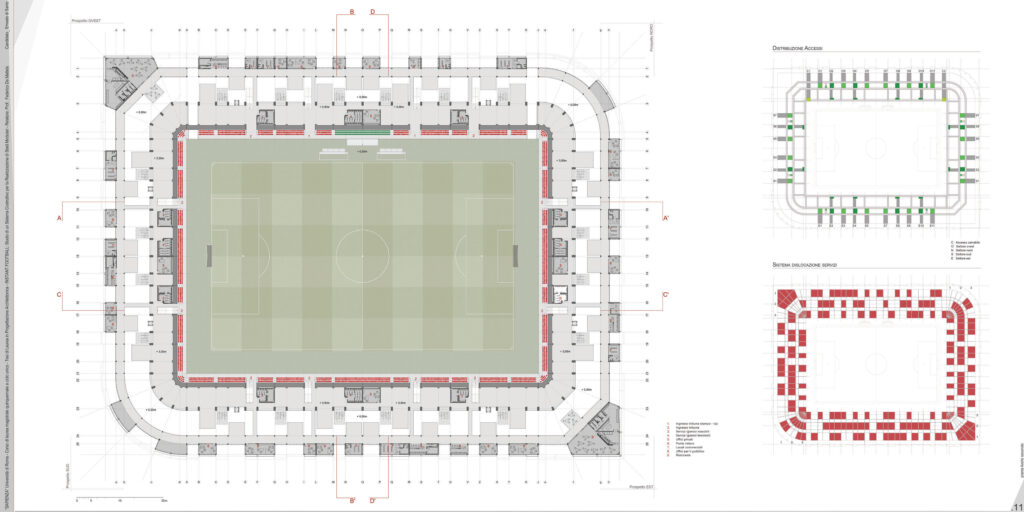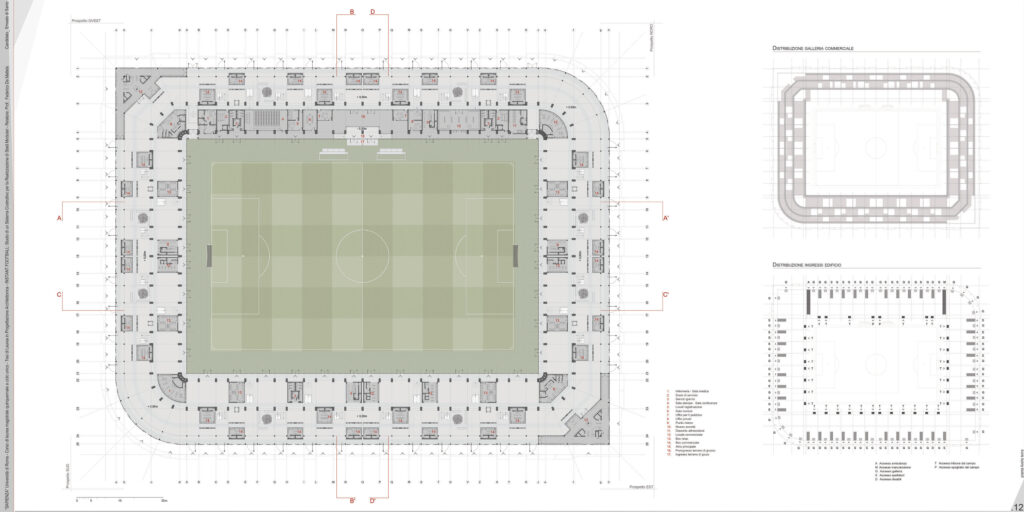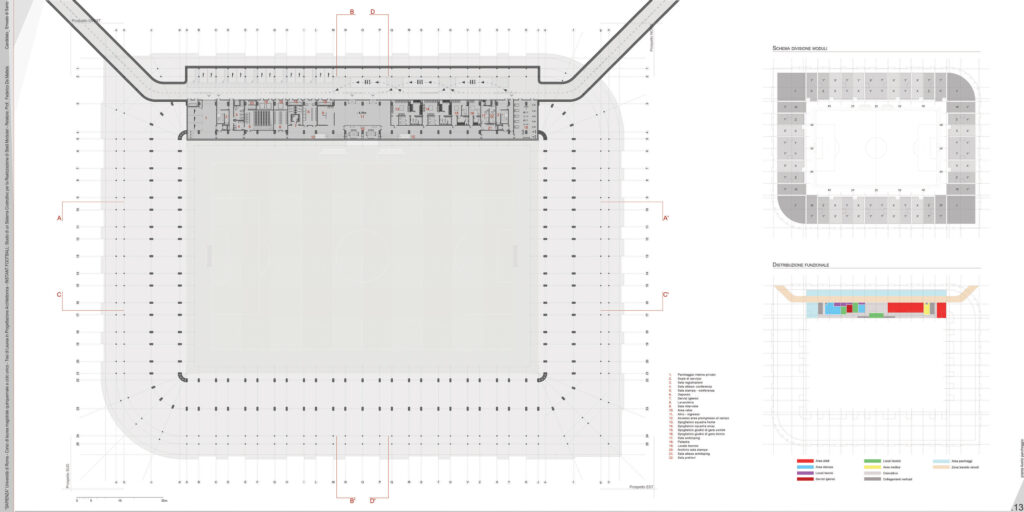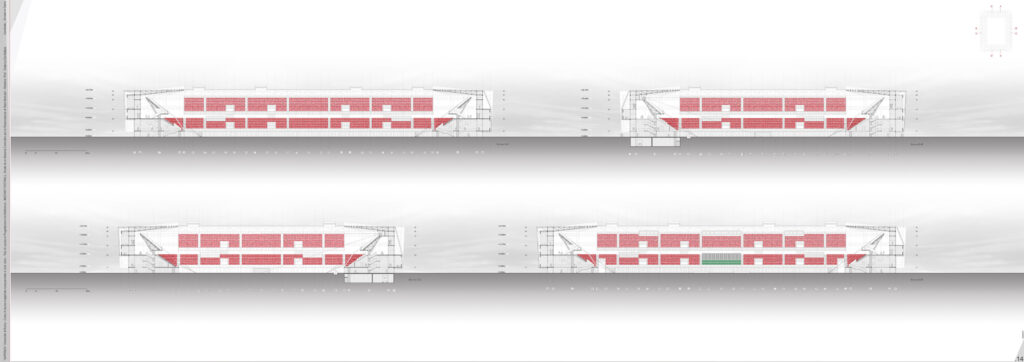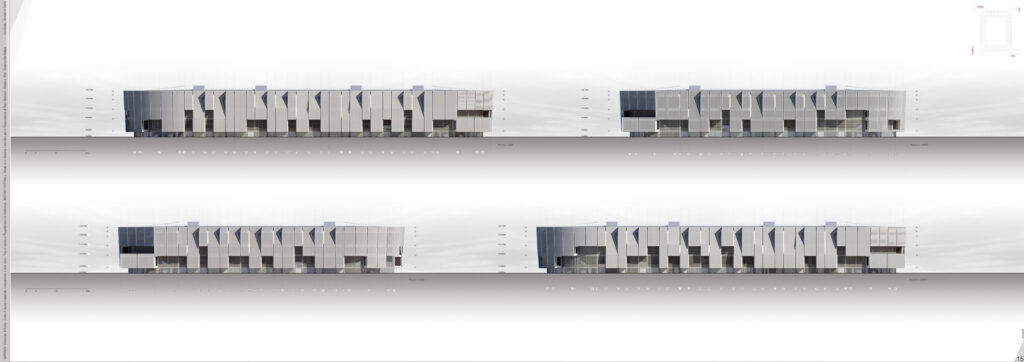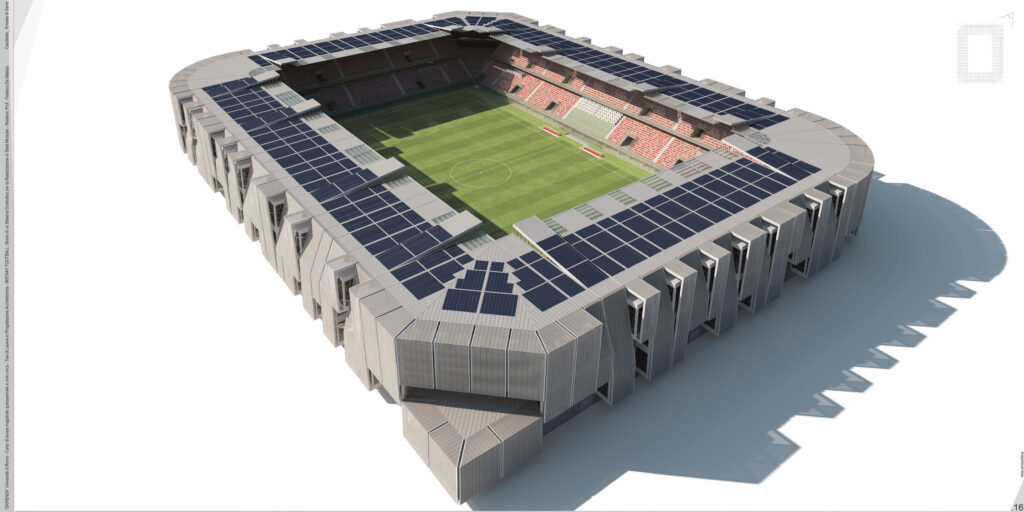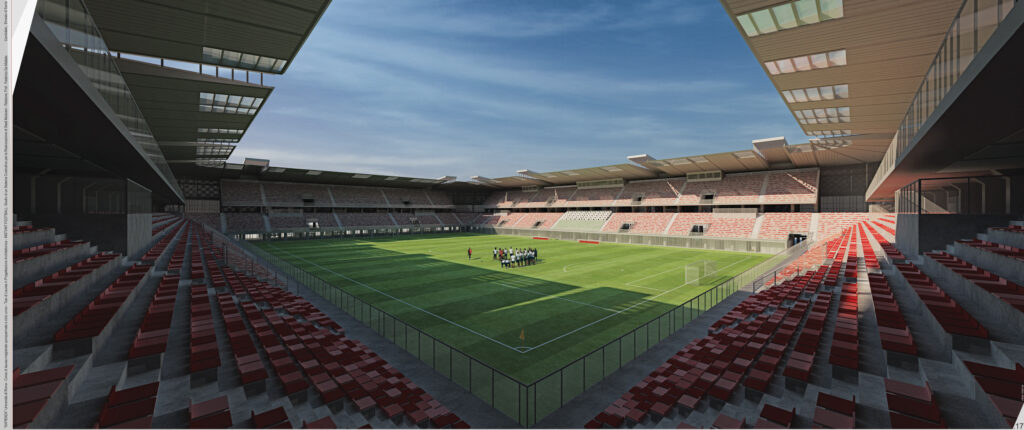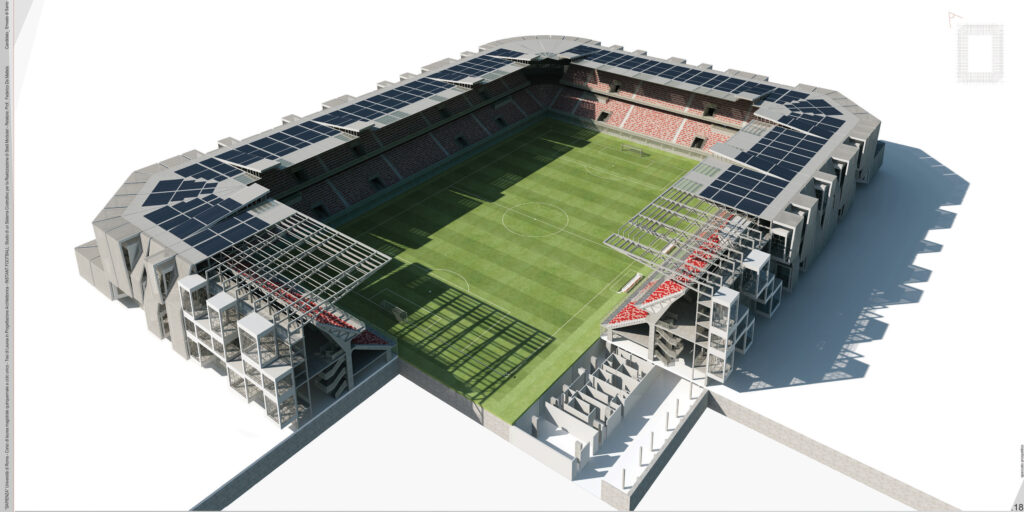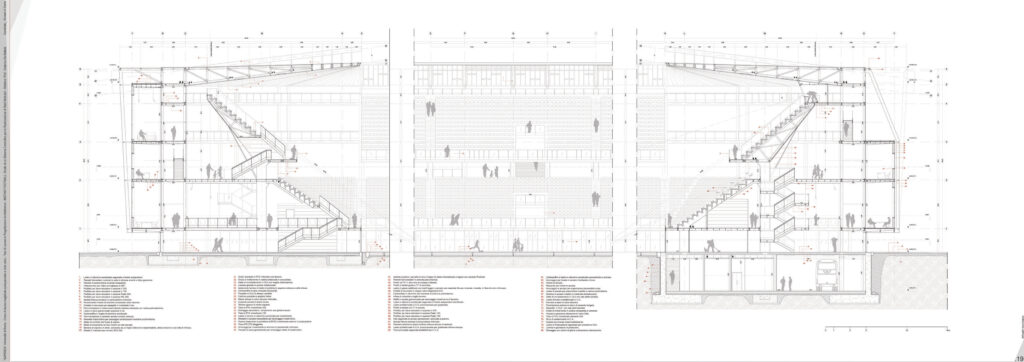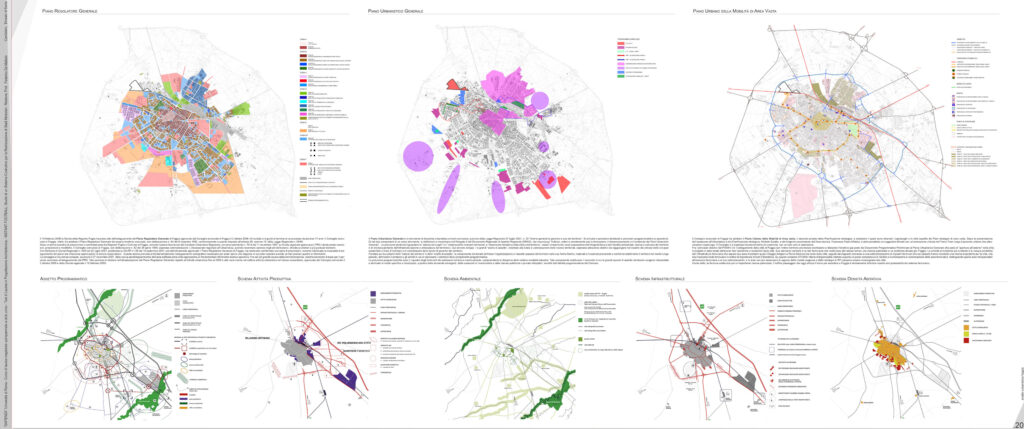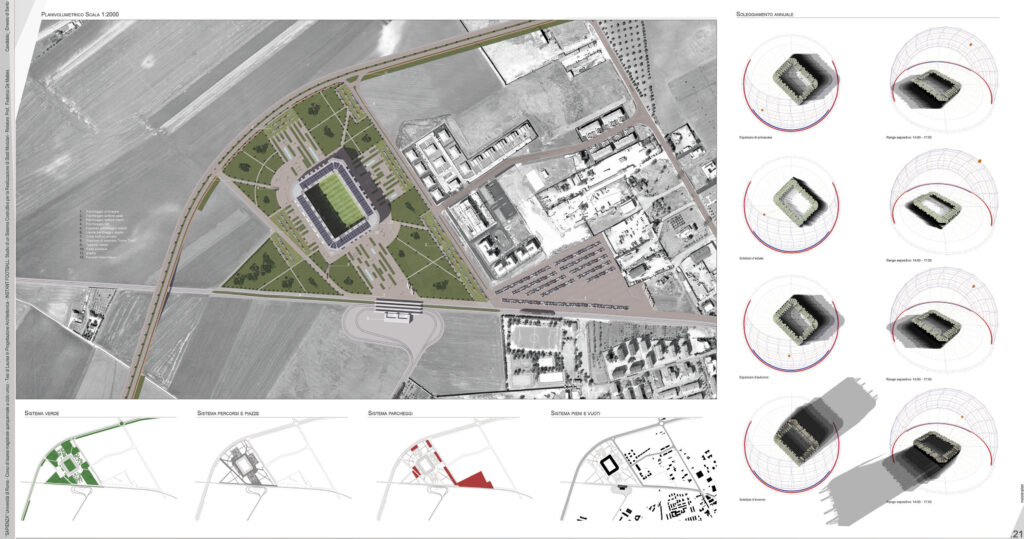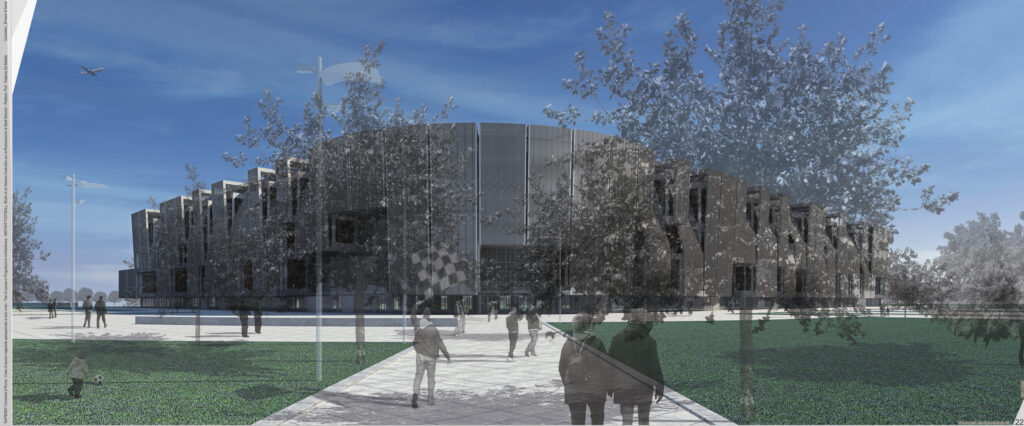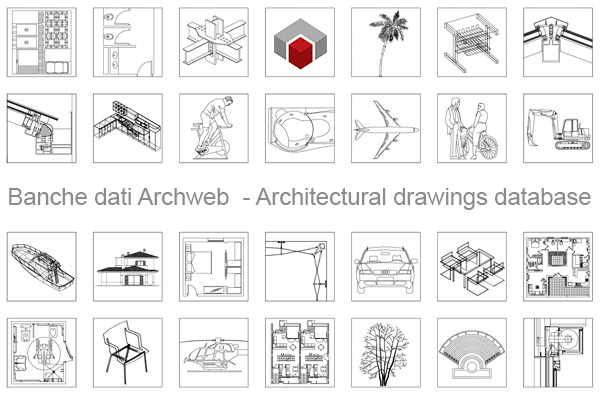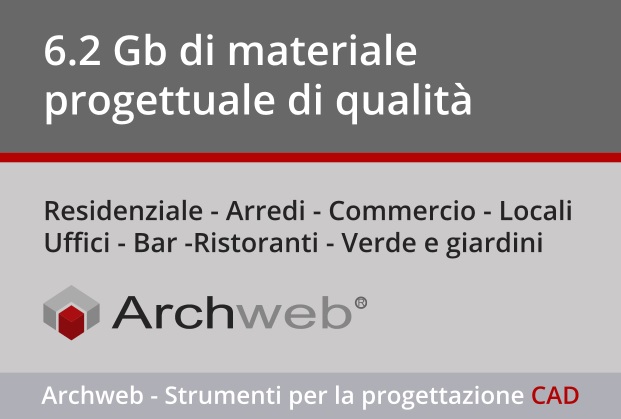Ernesto di Santo
Degree thesis in Architectural Design
INSTANT FOOTBALL: Study of a modular system for the construction of stadiums
Graduation thesis by Ernesto di SantoContact email: ernestodisanto@gmail.com
"SAPIENZA" University of RomeFive-year single-cycle master's degree course.
Speaker: Prof. Federico De Matteis
A.A. 2010 - 2011
The "myth" of modular design, of the possibility of imagining the repeatability of entire buildings even with high complexity and then industrializing their components, has an ancient origin and, even if the facts have demonstrated its substantial inefficiency, it continues to act as a moment for those who consider the project as a highly rational, markedly methodological activity. Already Durand hypothesized the possibility of designing buildings considering the modularity of the compositional elements as the keystone of a system that was governed by reason, where every complexity could be traced back to an ordered sequence of controllable parts.
Ernesto di Santo's graduation project, emblematically named Instant Football, recovers some cornerstones of prefabrication theory, proposing a modular system capable of leading to the preparation, in a short time and at low costs, of small and medium-sized football stadiums , designed for sports clubs which, in the absence of adequate structures to the most recent national regulations, must in any case be able to make use of a solution - even temporary - to respond to the requests of the Football Association and the market. Thus the system conceived can also provide for some flexibility over time, expanding or reducing the capacity of the system according to the division in which the team plays season by season.
The result of the experimentation, located in the outskirts of Foggia, shows the flexibility of the proposed system, capable of solving the complex needs of a structure of this kind with a minimum number of basic modules, while managing to create stages whose image is sufficiently variable and customizable so that these are not perceived as clones by the public.
Federico De Matteis
The project was born following a vision of the changes that are taking place in the world of football. The review and expansion of the current legislation in terms of the safety of sports facilities (CONI standards, DM March 1996, DL February 2003, DM June 2005 - Pisanu package, DL February 2007, DM August 2007, DM December 2005) and CONI regulation (Regulation of the Serie B stadiums, Lega PRO and Lega Dilettanti), the privatization of the plants and the increasingly deficient situation of the Italian stadiums (lack of structures, inefficiency of the safety system, very high operating costs in the lower series), pushed this project research towards a possible solution: the "Modular Stadium".
The research was directed and aimed at the design of a type of stadium, surrounded by current critical insights, such as flexibility and functionality in use, compliance with safety standards, efficiency and speed of costs and implementation times and the propensity to the aspect of "sustainability", which must be developed with respect for the environment and energy saving.
Particular attention has been paid to the design of a "sector or module" from a technological point of view, which can guarantee and trigger that process of industrialization and prefabrication suitable for rapid construction.
The steps in the research phase were mainly three:
- A first PHASE OF ANALYSIS, addressed to the study and research of the types of football stadiums, not only in the Italian panorama but also in the European and global one, with attached functional characteristics such as the layout of the system, the escape routes, the parking and outflow areas for the host fans, etc .;
- A second DESIGN PHASE, where the modular stage took shape in all its aspects, with technological insights, such as the ability, thanks to the modularity, of subsequent rapid and flexible changes in capacity, to adapt to the fluctuations of the team in the respective tournaments (expansion and shrinkage of grandstands, installation of full and non-covered roofs, refreshment points, etc.);
- A third APPLICATION PHASE, in which this type of stadium has been inserted in an existing urban context (Train-Tram exchange node, Foggia-Lucera line), to meet the needs of a third series team (Lega PRO): the US Foggia, in order to verify the effective usability of the system.
Ernesto di Santo
Ernesto di Santo
Author
Category Ernesto di Santo































































